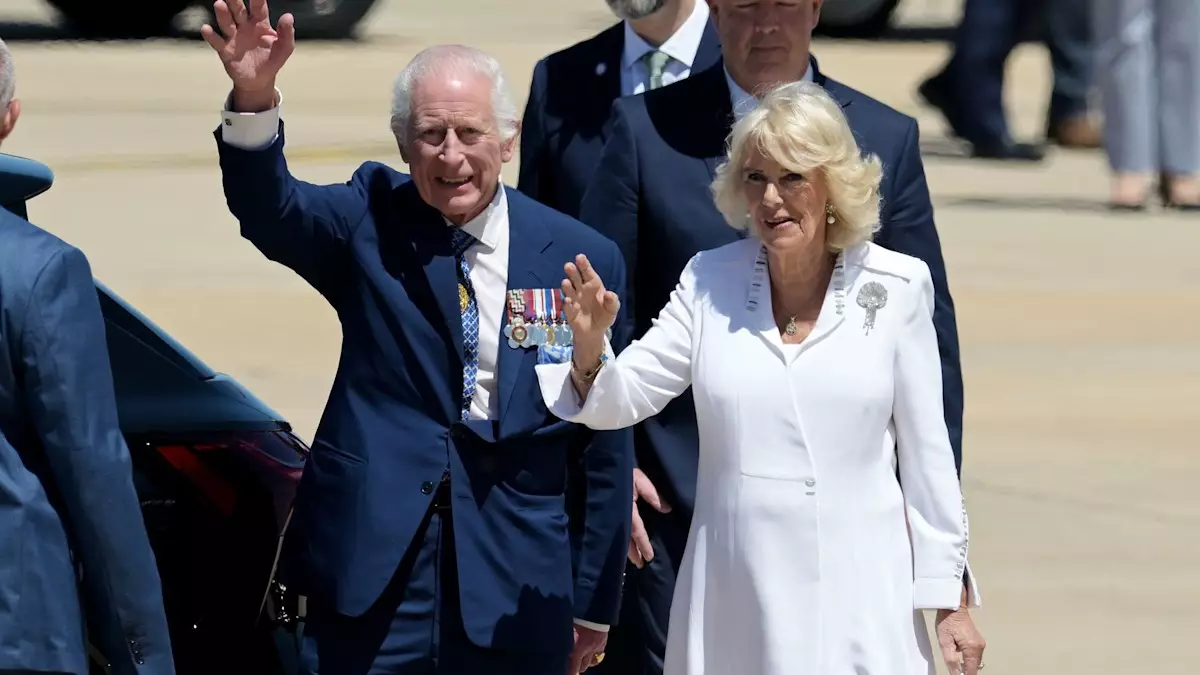King Charles III and Queen Camilla made a triumphant arrival in Canberra this week, enjoying a heartfelt reception from the Australian public. This visit marks their first to the Australian capital in close to ten years, emphasizing the enduring connection and affection that Australia harbors for the British monarchy. Queen Camilla’s choice of attire—a tasteful white silk crepe dress by Anna Valentine—was not only a fashion statement but also a nod to the elegance often associated with royal visits. Her striking diamond and pearl brooch, once belonging to the late Queen Elizabeth II, added a layer of historical significance to her ensemble, reminding the gathered crowd of the monarchy’s legacy.
This trip comes at a critical juncture in King Charles’s life; it is his 16th official visit to Australia, a country laden with personal meaning for him, having spent part of his youth here in 1966. Furthermore, this engagement holds a special poignancy as it follows his recent cancer diagnosis, a challenge he faces while fulfilling his royal duties. The emotions surrounding their arrival were palpable, as the couple navigated the public’s outpouring of support, underscoring why royal visits often carry an emotional weight beyond formalities.
Shortly after landing, the royal couple paid tribute at the Australian War Memorial by laying a floral arrangement at the Tomb of the Unknown Australian Soldier. This act of remembrance not only signifies respect for the sacrifices of Australian soldiers but also illustrates how royal visits often aim to strengthen the ties between the monarchy and its subjects. Charles and Camilla last visited this solemn site in 2015, and seeing the public gather to witness their homage was a testament to the ongoing fascination and respect for the monarchy within Australia.
Among those witnessing the visit was Georgia Bray, a self-professed republican who set aside her usual stance to celebrate this occasion, declaring, “I’m Australian, and Australians are polite. We’ll give our King and Queen a good welcome.” Such moments reveal the ability of royal visits to transcend political affiliations, allowing citizens to partake in national pride and collective memory. Others, like Lynton Martin, contributed to the festive atmosphere, donning creative outfits that showcase their enthusiasm for the royals.
Taking their royal itinerary to the heart of Australia’s governance, the King and Queen visited Parliament, where they received a gracious welcome from government officials and judiciary members. This engagement isn’t merely ceremonial; it serves as a reminder of the cooperation that exists between the monarchy and Australia’s parliamentary system. Moreover, their keen interest in environmental issues took center stage at the National Bushfire Behaviour Research Laboratory, where Charles, an ardent advocate for ecological causes, observed a demonstration of innovative fire behavior techniques. His commitment to understanding and combating environmental challenges reinforces the idea that royal duty encompasses advocacy, especially for a nation frequently affected by bushfires.
Beginning their tour in Sydney, King Charles and Queen Camilla were greeted by throngs of enthusiastic well-wishers, a scene that highlighted the ongoing affection many Australians feel towards the royal family. Their engagements showcased a blend of tradition and modernity, where formal visits intertwine with open interactions with citizens. The warm welcome underscores a unique aspect of the Australian experience with the monarchy—despite being on the other side of the world, many Australians feel connected to the British royal family through shared history, values, and cultural interactions.
The royal couple’s itinerary is packed with events as they continue their tour throughout Australia before heading to Samoa for a meeting of British Commonwealth countries. This commitment to fostering relationships across the Commonwealth reflects King Charles’s vision of a renewed, interconnected global community, particularly as he seeks to uphold the relevance of the monarchy in contemporary society. As he embarks on this significant journey, it becomes clear that he faces health challenges with the same dedication he has shown throughout his life, reaffirming his longstanding advocacy and commitment to the Commonwealth.
King Charles and Queen Camilla’s visit encapsulates not just ceremonial duties, but the emotional and cultural connections that bind a country to its monarchy, each visit acting like a thread woven through the fabric of shared history and potential futures.

